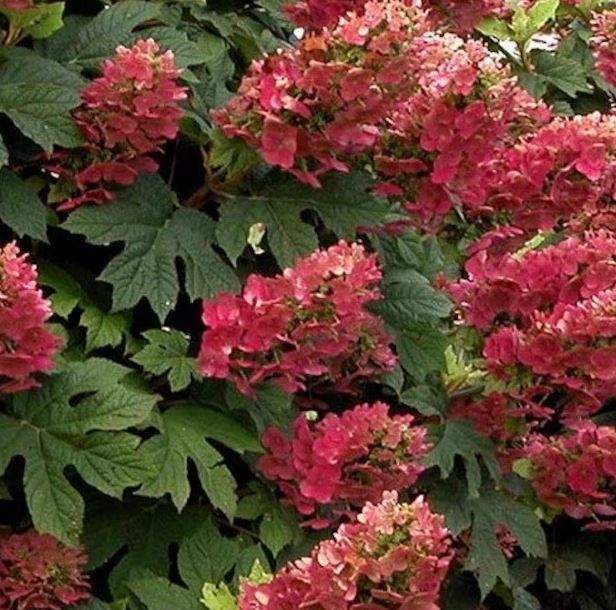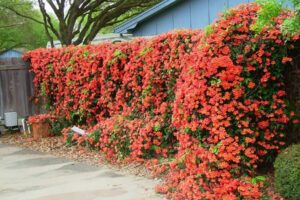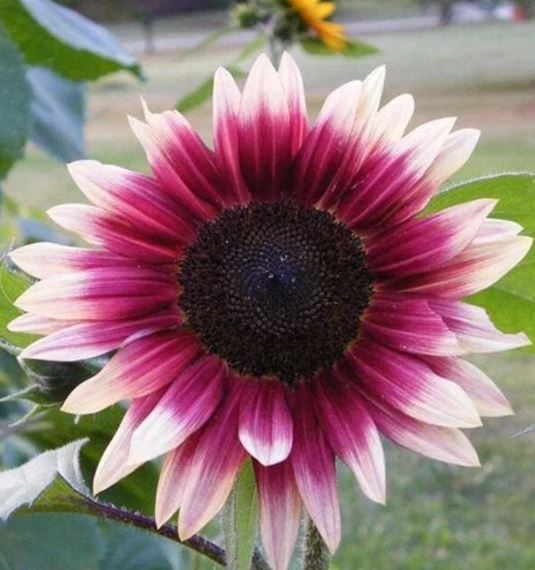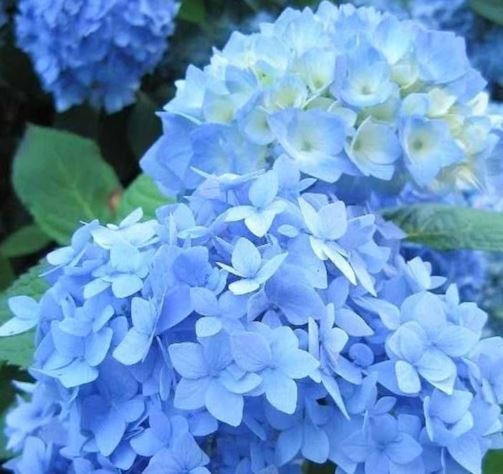mygardenchannel
Check Out Our New Online Plant Shop!
Introduction:
Hydrangeas are renowned for their stunning blooms and ability to transform any garden into a colorful paradise. Among the vast array of hydrangea varieties, the Ruby Slippers Hydrangea stands out for its unique charm and vibrant appearance. In this blog post, we will delve into the captivating world of Ruby Slippers Hydrangea, exploring its characteristics, care requirements, and the reasons why it should find a place in every garden enthusiast’s heart.
- Scientific Name: Hydrangea paniculata ‘Ruby Slippers’
- Characteristics: “Ruby Slippers” is a compact and dwarf variety of panicle hydrangea. It typically grows to a height of 3 to 4 feet (90 to 120 cm) and has a similar spread. The flower clusters start out white and gradually turn pink, and they have a distinctive cone shape. As the flowers age, they can take on deeper shades of pink and eventually turn a deep rose color in the fall. The foliage is also attractive, with dark green leaves that turn burgundy in the fall.
- Blooming Time: “Ruby Slippers” panicle hydrangeas generally start blooming in mid to late summer, around July or August, and their flowers can continue to provide color well into the fall.
- Hardiness: This variety is known for its cold-hardiness and can tolerate colder climates compared to some other hydrangea species.
- Growth Habit: “Ruby Slippers” has a more compact and tidy growth habit, making it suitable for smaller garden spaces or even container gardening.
- Care: Like other panicle hydrangeas, “Ruby Slippers” prefers well-drained soil and can tolerate a range of soil pH levels. It thrives in full sun to partial shade. Regular watering and occasional fertilization can help promote healthy growth and abundant flowering.
1. Aesthetic Appeal:
One of the most striking features of the Ruby Slippers Hydrangea is its beautiful and eye-catching blooms. The flowers are cone-shaped, resembling a ruby slipper, hence the name. Initially, the blossoms emerge as creamy white, gradually transitioning into a vivid ruby-red hue as they mature. This fascinating color transformation adds an element of interest to any garden, making the Ruby Slippers Hydrangea a true showstopper.
2. Compact Size:
Compared to other hydrangea varieties, the Ruby Slippers is relatively compact, making it an excellent choice for smaller gardens or containers. With an average height of 2 to 3 feet and a width of 3 to 4 feet, this hydrangea can fit seamlessly into any landscape design without overpowering other plants or structures.
3. Versatile Planting Options:
Ruby Slippers Hydrangea thrives in various planting scenarios, whether it’s as a standalone specimen or as part of a mixed border. Its compact nature allows it to be planted closer together, creating a stunning mass planting effect. Additionally, it can be utilized as an accent plant or even as a foundation planting near the entrance of your home, welcoming visitors with its vibrant blooms.
4. Easy Care Requirements:
One of the reasons why the Ruby Slippers Hydrangea is a favorite among gardeners is its low maintenance nature. It prefers well-drained soil and thrives in partial shade to full sun, making it adaptable to a variety of growing conditions. Regular watering and a layer of mulch around the base of the plant will help retain moisture and keep the roots cool. Pruning is minimal, with the removal of dead wood and the occasional shaping to maintain the desired form.
5. Year-round Interest:
Aside from its stunning blooms, the Ruby Slippers Hydrangea offers visual interest throughout the year. In the fall, the foliage transforms into a beautiful mix of red, orange, and purple hues, adding a touch of autumnal charm to the garden. During the winter months, the dried flower heads persist, providing texture and contrast against the barren landscape. This hydrangea truly offers a year-round visual spectacle.
Questions or Concerns
how long does It take for hydrangeas to get their flowers?
- Bigleaf Hydrangeas (Hydrangea macrophylla): These are the most common type of hydrangeas and are known for their ability to change flower color based on soil pH. They typically start producing flowers in late spring to early summer, around May or June, and can continue blooming through the summer months.
- Panicle Hydrangeas (Hydrangea paniculata): These hydrangeas tend to bloom a bit later than Bigleaf hydrangeas. They usually start producing flowers in mid to late summer, around July or August, and their blooms often last into the fall.
- Smooth Hydrangeas (Hydrangea arborescens): These hydrangeas typically begin flowering in early to mid-summer, around June or July. They tend to have a shorter blooming period compared to other types.
- Oakleaf Hydrangeas (Hydrangea quercifolia): Oakleaf hydrangeas generally start blooming in early to mid-summer, similar to Smooth hydrangeas. Their unique foliage and cone-shaped flower clusters add visual interest to the garden.
- Climbing Hydrangeas (Hydrangea anomala subsp. petiolaris): These hydrangeas are known for their slow growth and tend to take a few years to establish before producing significant blooms. Once established, they typically start flowering in late spring or early summer.
Visit Our Shop
Looking for more plants like the Ruby Slippers Hydrangea? Click this link to be transported to our Esty shop.
Proudly powered by WordPress





